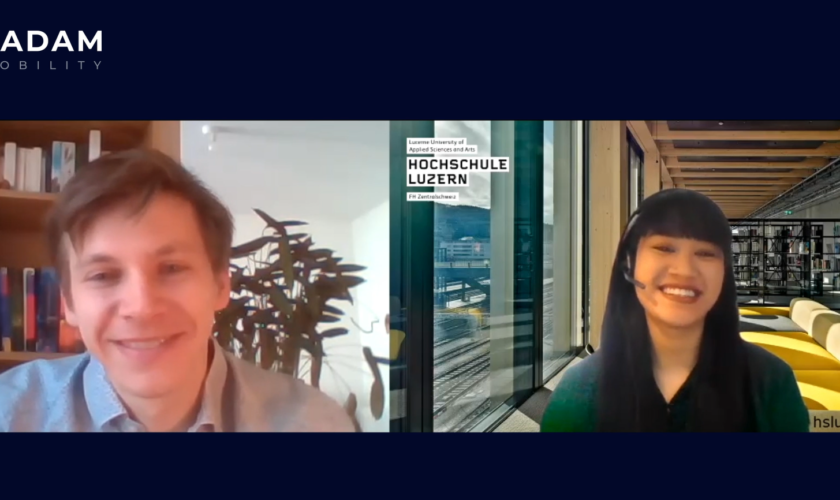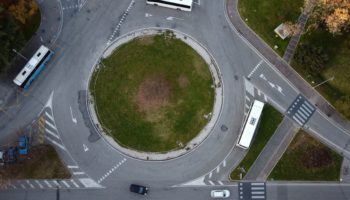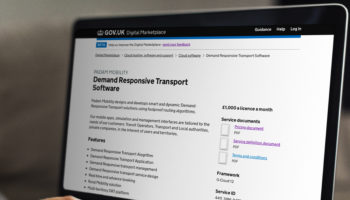On-Demand (or Demand-Responsive) Transport has been trending worldwide. But what does it mean exactly? It’s a mode of transport where instead of having fixed lines and fixed timetables, the itineraries are actually optimised based on the demand or bookings. In order to understand a bit more the impact of on-demand mobility on sustainability, Grégoire Bonnat, CEO of Padam Mobility, interviewed Lisa Dang, Research Associate at Lucerne University about the conclusions she had following the publication of her recent study on the subject.
Lisa, you are with the University of Lucerne and you recently published your study on the impacts of on-demand mobility on sustainability. Could you start by describing briefly what your study is about?
In our study, we examined the effects of On-Demand Mobility Services on sustainability in terms of emissions and traffic volume. For the analysis, we created four service options designed to be as realistic as possible, depending on the level of On-Demand Mobility integration into public transport :
- On-Demand Line Operation, a service that operates like a “conventional” bus line, but is enhanced by an additional on-demand component;
- On-Demand Public Transport Supplement, a service that provides an extension of public transport and is used, for example, only during off-peak hours when public transport services are infrequent;
- On-Demand Public Transport Replacement, a service that replaces public transport through virtual stops, e.g. door-to-door rides;
- Commercial On-Demand, a service that directly competes with public transport and aims to poach users.
The main focus of the study is the comparison of a rural area that is Glarus South with an urban region that is Basel St. Johann, both located in Switzerland. The calculations of the study are based on a sustainability simulation model created on Excel. The input data for the simulations are taken from the literature, as well as empirical data from pilot projects.
So according to your simulation, which of the service options is the most efficient?
In the service options that are the extension, the replacement and the competition, a significant increase in CO2 emissions can be expected, as a considerable share of users of these services come from the more environmentally friendly modes of transport, that is public transportation or non-motorized transportation.
However, implementing the supplement service option is recommendable. There are positive effects in terms of CO2 emissions because in this case, many passengers change from a taxi or a private car to this eco-friendly collective transport service.
And what would be your findings regarding traffic volume?
In all service options and in both spatial contexts, additional road traffic is a consequence of the on-demand collective transport services. There is additional traffic because according to the model assumptions, a considerable proportion of users in all service options switch from public or non-motorized transport to the on-demand collective transport services. And moreover, this effect is due to the low occupancy rate of on-demand collective services caused by a low degree of ride pooling and a high proportion of empty kilometres.
Have you found any interesting differences between the urban and the rural areas?
Yes, the results of the simulation regarding the influence of the area on the advantages of on-demand collective transport services show that the extension, replacement and competition service options generate higher additional CO2 emissions in the rural than in the urban area. The supplement service option, which is the favourable one, leads to a reduction of CO2 emissions in both areas with a higher reduction of CO2 emissions in the urban area. However, in urban areas, there’s a negative impact on the traffic volume in terms of additional vehicle kilometres since the pooled public transport demand is replaced by less pooled on demand vehicles.
So, in the end, which factors influence the ecological balance of on-demand shared mobility?
By calculating sensitivities, the present study shows which factors influenced the ecological balance and how strong the effects are. The model shift as well as the propulsion system technology have a strong influence on ecology and traffic volume. Regarding the traffic volume, we can say that the model shift, the average usage and the pooling rate have a particularly high influence on the generated traffic.
If the majority of trips could be shifted from motorized private transport to the new On-Demand Mobility Services and at the same time an average capacity higher than that of a private car could be achieved, there would be positive effects on space and environment, and these aspects are particularly important in densely populated areas with high traffic volumes.And regarding the ecological effects, we find that the introduction of on-demand collective transport services leads to less traffic and fast to lower CO2 emissions when making optimistic assumptions regarding the pooling of ride requests, the empty rate and the shift from private cars. Also, the electrification of the vehicle fleet has a major effect, while the average distance per passenger has only a small effect.
This article might interest you: DRT optimisation: without the guarantee of advanced booking, no efficient route optimisation













